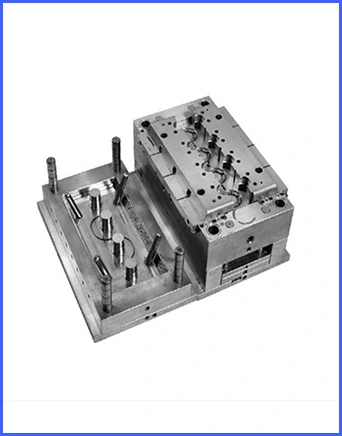Time to read: 6 min

As the demand for high-quality and diverse plastic products grows, manufacturers are tasked with enhancing mold quality to meet these standards. A pivotal step in this process is plastic injection mold polishing, which significantly impacts the final product's surface finish and overall quality. This guide will explore the various mold polishing processes, their importance, and best practices to ensure optimal results.
What is Mold Polishing?
Mold polishing is a technique used to achieve smooth surfaces on plastic injection molds. It involves the removal of high spots through plastic deformation and cutting, typically using wool wheels, whetstone strips, and sandpaper for manual polishing.
Importance of Plastic Injection Mold Polishing
Mold polishing is essential for several reasons:
- It ensures smooth ejection of plastic parts, preventing defects.
- It enhances the aesthetics and durability of the workpiece.
- It reduces injection cycle times with effective polishing techniques.
Types of Plastic Injection Mold Polishing Processes
1. Mechanical Mold Polishing
This involves manual operations using abrasive tools to smooth the mold surface. Ultra-precision polishing techniques can achieve a surface roughness of Ra 0.008 micrometers.
2. Chemical Mold Polishing
A chemical medium is used to dissolve micro-projections on the material surface, creating a uniform finish suitable for complex parts.
3. Electrolytic Mold Polishing
Based on the principles of chemical polishing, electrolytic polishing selectively dissolves the workpiece surface without the influence of cathode reactions.
4. Ultrasonic Mold Polishing
Utilizes an abrasive suspension and ultrasonic waves to polish hard materials without causing deformation.
5. Fluid Mold Polishing
Flowing fluid with abrasive particles erodes the workpiece surface, driven by hydraulics and suitable for polishing with low pressure.
6. Magnetic Mold Polishing
Uses magnetic abrasives to create a brush that grinds the workpiece, providing high-quality results with ease of control.
Mold Polishing Tips
To get the best results from mold polishing:
- Clean the workpiece surface before polishing.
- Start polishing from the most challenging areas.
- Polish multiple components separately before assembling.
- Use oilstone for rough lines and check for undercuts.
- Attach sandpaper to contacting surfaces for protective effects.
- Use a horizontal oilstone handle for optimal polishing.
Unofactory Plastic Injection Molding Capabilities
Unofactory offers high-quality injection molding services with a wide range of materials and finishing techniques. Our experienced team ensures the highest manufacturing standards, providing custom solutions at competitive prices.
SPI Guidelines for Plastic Injection Mold Polishing
The Society of the Plastics Industry (SPI) provides guidelines for mold polish finishes, detailing the textures required for different applications.
Considerations for Plastic Injection Mold Polishing
When choosing mold polishing techniques, consider the molding process, material properties, and cost implications to make the right choice for your specific needs.
Conclusion:
Plastic injection mold polishing is crucial for achieving high-quality injection molded parts. By understanding the different techniques and following best practices, manufacturers can enhance the aesthetics and functionality of their products. For reliable and experienced injection molding services, consider partnering with Unofactory.




